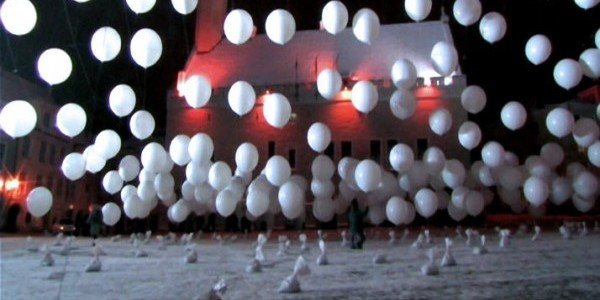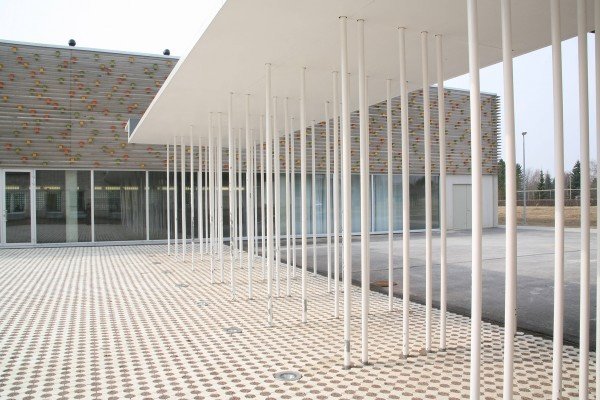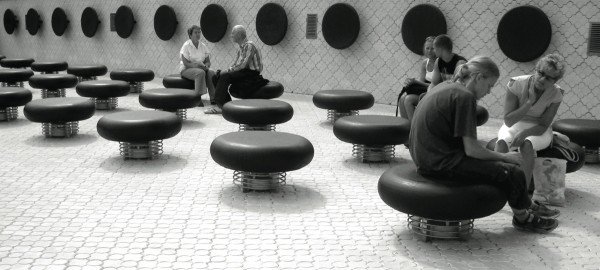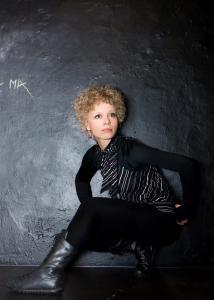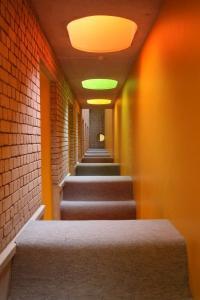Veronika Valk is one of the most ambitious young generation Estonian architects, whose work is not just about serious architecture and grey cityscapes – against the common understanding of the black-and-whiteness of her profession, she explores the humane and fun factors of the built environment.
In her works, both theoretical and practical, she concentrates on pragmatic usability as well as on emotional fulfillment. Recently, Veronika has managed to add some more duties on her professional list: she now edits the architecture, urbanism and design related news for Estonian culture and art newspaper Sirp.
Valk studied at the Estonian Academy of Arts (EE) and Rhode Island School of Design (US) and is currently a PhD candidate at RMIT University School of Architecture in Melbourne (AU). She lives in Tallinn and works as an architect in her practice Zizi & Yoyo. She has constructed both public and private buildings, designed interiors and landscapes, won some 30 prizes at various competitions as well as published a number of critical essays on architecture and urbanism. Veronika received the Estonian Young Architect Award in 2012.
In the following interview we try to scratch the surface of what ideas lie behind her works and what she thinks about the architectural state of our world today.
What is the person, place, event or some other instance that has inspired you the most?
At this instance in time, it has to do with recent developments in biological arts perhaps. Lucky I met Oron Catts and lonat Zurr a few years ago who run SymbioticA research laboratory in Perth, Western Australia, enabling artists and researchers to engage in wet biology practices. Their perception, their investigation and observations of “life” have indeed had an impact on how I regard the future of my practice and possibilities of an architect to engage with new developments in culture, including science, technology and the concurrent engineering paradigm. So, what does it all have to do with architecture? The search for vitality, or investigation of “life”, expresses itself in my work through the search for the “joyful” and “playful” which are usually not mentioned in any of the briefs of commissioned work. An architect is typically asked for pragmatic solutions — for a building to function the best way possible, for a structural solution to be energy efficient, for design and surfaces to be easily maintained and so on. In my practice, I have demanded the outcome to be more than that — I have searched for ways to integrate the “playful” and the “joyful” in buildings (e.g. Suure-Jaani sports center), in public spaces (e.g. composer Eduard Tubin’s monument and urban installations for festivals of light) as well as in my teaching, curatorship etc. I call it the “embodied generosity” of practice, something which inherently increases the quality of solutions for built environment even if no one asks for this to start with, in the commission briefs.
How much has the Estonian spirit and Fenno-Ugric background influenced you in your work? How would you compare the importance of different identities in your career, Estonian vs cosmopolitan?
I do not identify myself as cosmopolitan, but Estonian. While scientists know that their work positions itself in the global context, architects are always from a specific geographic location, their work belongs to a specific place. Yet what we can talk about is the notion of “crossing contexts” and that our knowledge about the outside world might “evoke” certain ideas or approaches. For example, think of the Tallinn waterfront — formerly closed-off industrial and military zone — and the issue of returning some of it back to the public (e.g. the Kultuurikatel initiative). It points to the dilemma of “post-traumatic” in urban development as well as “dignified aging” of some of the monumental buildings on the shore (e.g. the Linnahall concert hall), often loaded with ideological legacy. Here, we can look at other similar situations in other cities, but it would be wrong to implant those foreign ideas in a straightforward way. Bearing in mind the complex history of Estonia, we must focus on the actual [existing] built environment — our cultural heritage and the spine of the society’s physical identity — as well as the people who inhabit it, the cultural context in constant flux. What we as architects can do, however, is to investigate how the city as our common ground could simultaneously accommodate all of those identities of different generations in crossing contexts, affected by shifting times, [horrific] memories and layers of tacit knowledge. And still prove desirably “profitable” in neo-liberal terms. Think of the hydroplane hangars (the Maritime Museum), Patarei (a former political prison), Kultuurikatel (a former heat plant turned into a creative hub) or Linnahall as landmarks on Tallinn waterfront. We operate at a time when the nonconformist architectural icons require re-evolution of the term “use value”, which is of worldwide urban concern. Thus, here indeed the local meets the global.
How do you see Estonia today? What are your views on the recent developments and closer future of the world?
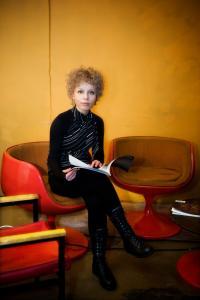 From an idealist position, the practitioner (ie an architect) is trained to model the world for the better. Thus, I can only be the incurable optimist, even though we are suffering from the Anthropocene (Stoermer, Crutzen). The new generation of Estonian architects share a commitment to open up the discipline and make it part of the larger public. In that sense, I see Estonia as a precious hive mind, although struggling in global turbulence. The recent developments in transdisciplinary hybridisation of arts and sciences force the contemporary technological culture to rise from self deception — from deluding itself about the extent of its eternally positive impacts, by taking up more honest and more critical positions with regard to its overall weakness in addressing the broader issues… be it climate, food scarcity, depletion of natural resources, (non-)Western value systems or something else. We must exit the last page of the “humanities versus real sciences” war. It is time to bring the community of practitioners in arts and sciences together so that it can rise and stand in solidarity for the ecosystem.
From an idealist position, the practitioner (ie an architect) is trained to model the world for the better. Thus, I can only be the incurable optimist, even though we are suffering from the Anthropocene (Stoermer, Crutzen). The new generation of Estonian architects share a commitment to open up the discipline and make it part of the larger public. In that sense, I see Estonia as a precious hive mind, although struggling in global turbulence. The recent developments in transdisciplinary hybridisation of arts and sciences force the contemporary technological culture to rise from self deception — from deluding itself about the extent of its eternally positive impacts, by taking up more honest and more critical positions with regard to its overall weakness in addressing the broader issues… be it climate, food scarcity, depletion of natural resources, (non-)Western value systems or something else. We must exit the last page of the “humanities versus real sciences” war. It is time to bring the community of practitioners in arts and sciences together so that it can rise and stand in solidarity for the ecosystem.
Which topics in your perspective are the most important in today’s world? How are they related to the future of architecture? What could a common citizen do to get involved and help?
Speaking of the Anthropocene and its overabundance of “crises”, we should perhaps be concerned about the emergent “solutions”. Here, I refer to recent trends in geoengineering and the issues of biopolitics. On one hand, the investment in geoengineering might be necessary to alleviate the frustration of electorates which are not supporting the radical changes to their lifestyles required by significant — emission, financial etc. — cuts. The secondary objectives for weather manipulation include demographic, energy and agricultural resource management pretexts. As the weather has been weaponised, the role of those in charge of “spatial arts” (i.e. territorial planners, architects, landscapers etc.) is more demanding than ever before. We must draw attention to some of the instruments which refer to the political illusion of planetary control and ask how the professionals in the field could tackle the new biogadgets to terraform Earth. Indeed, warfare now includes the technological ability to induce, enhance or direct cyclonic events, earthquakes, draught and flooding, including the use of polymerised aerosol viral agents and radioactive particulates carried through global weather systems. At least four countries — the US, Russia, China and Israel — possess the technology and organisation to regularly alter weather and geologic events for various military and black operations. A small group of leading climate scientists, financially supported by billionaires, is lobbying governments and international bodies to back experiments into manipulating the climate on a global scale to avoid catastrophic climate change. I guess an architect’s ultimate goal — as this is what one is trained to do — is to imagine a future that is worth creating, and to reap the competitive advantages of designing it and making it happen, building it. Yet we are also obliged to remain our curiosity for the world, to raise our awareness — to make informed decisions on a daily basis. This last bit goes not just for architects, but everyone.
As architecture is mainly a material and visual art, it is mostly recognised as a pragmatic discipline in the northern hemisphere. How could architecture make people not to think about material values and to connect with themselves, with their spirituality and common sense?
I might not be the strongest believer in “common sense”, a term too often used for dubious pretexts to justify destructive behavior. Yet I mentioned the “playful” and the “joyful” earlier. I think this is one of the keys. Venturous practice walks on the borderline of fiction and reality. Our curiosity is what enables us to learn. Our ability to dream fuels our action. Hence, architecture which triggers our curiosity for the world and fuels our imagination, and manages to do it in a playful yet resilient way, is probably the way ahead.
As you have written several articles about greener environmental and architectural solutions, readers would be delighted to hear about your thoughts of CO2 emissions and the ending of fossil fuels. What do you think, how will the world look in 50 or 100 years? Will the shift from fossil fuel driven transportation to green energy go smoothly around the world or will there be gradual uneven unpredictable path to new energy resources?
Thinking of the current situation of Estonia and its oil shale reserves, then the energy generation is shifting towards shale oil and retort gas. But this enables hydrogen production. However, as it is excessively costly to transport hydrogen over long distances, we would need to consume it on the spot, within the country. Perhaps we are able find a way to develop a market for vehicles which run on hydrogen. Otherwise, we might eventually end up using more and more biofuels. Or, in case the international power grid and energy storage solutions improve considerably, we might benefit from the growth in shale gas or massive solar energy facilities around the world. Beyond this, we might witness phenomena like farming oceans for algae, synthetic telepathy, humans merging with machines, almost infinitely extended life expectancy, rush to develop the Arctic and then Antarctica, single worldwide currency. Whether all these things happen within the next 50 to 100 years and whether the ride is bumpy or seems to us unbearably unpredictable, depends largely on our understanding of the self, projected into the future. Our comprehension of the future “human” or “ecology” is an elongation of past decades yearning and rigorous search for revolution of (human, ecological) sensibilities.
How do you see the future of Estonian architecture? Do you see that state could manage without the institution of the State Architect?
Estonia certainly needs a spatial strategy. It might be that to obtain a sophisticated spatial strategy, we indeed need the institution of the State Architect, someone to instigate the genesis of this strategy. I guess I am more interested in what would make a country’s spatial strategy an engaging one. Perhaps it is about inviting people in to play and work on the project. Using third sector initiatives, private developments and public space projects as “living cell enriched” materials. Maybe then we are able to invent techniques to treat urban matter differently. To treat it in a way in which it starts to fire up certain processes that work with “enzyme based cellular structures” such as (grassroot) societal initiatives. Material scientists and systems engineers are looking at such innovation in biological scale, yet the scale difference is here the major issue to overcome. For this reason, biomimicry is not going to help. The emotional affect of a potential statewide spatial plan is related to specific encounters between the locals and their context, their non global set of sensations. And these sensations change over time as they are evoked by crossing contexts. Thus, the morphogenesis of the spatial strategy needs to remain in correlated flux. Closer look at the complex behavior of human networks, habitat patterns, collective choreographies across scale, assembled into the spatial strategy, could teach us how to overcome the constraints that come with “computational” models trapped in excel sheets. At the level of consensus, the spatial strategy needs to prioritise cooperative forms, with the architect becoming, once again, the intermediary. Architectural practice in Estonia needs to rethink the robustness of the discipline at the core, to stop the avalanche of non-natural interventions as interferences. Superimposition of a transcendent idea or ideological superstructure makes architecture and urban planning highly unstable, if the “abductors” i.e. the performers of the subculture of “parametricism” speculate in the fog of speculative factors and opportunistic circumstances. There is an extensive amount of tacit knowledge in local architectural practices, and at its best, the spatial strategy should capitalise on this potential, to possess ways to observe and respond to collaborative processes emerging from respective discourses in the society. It comes without saying that the spatial strategy has to be as transparent as possible. In essence, it is not a question of improvisation any more, but that of having a perspective, to understand what is the identity of this country and how it is performing.

